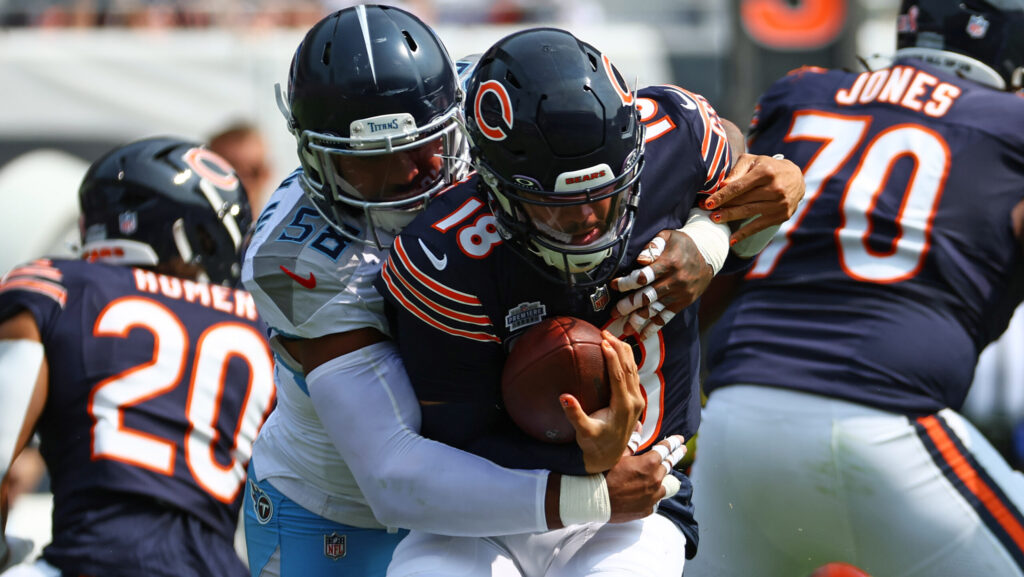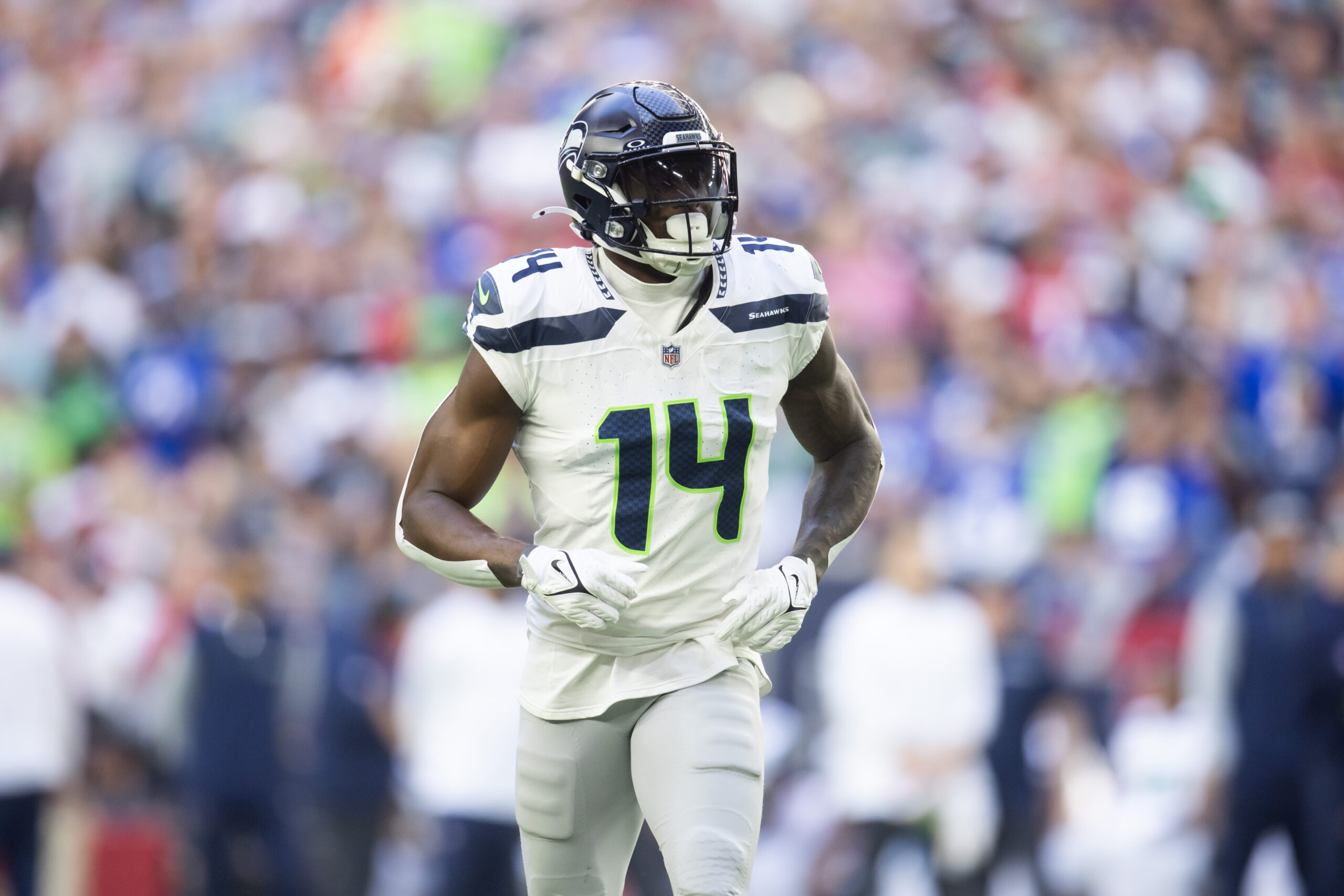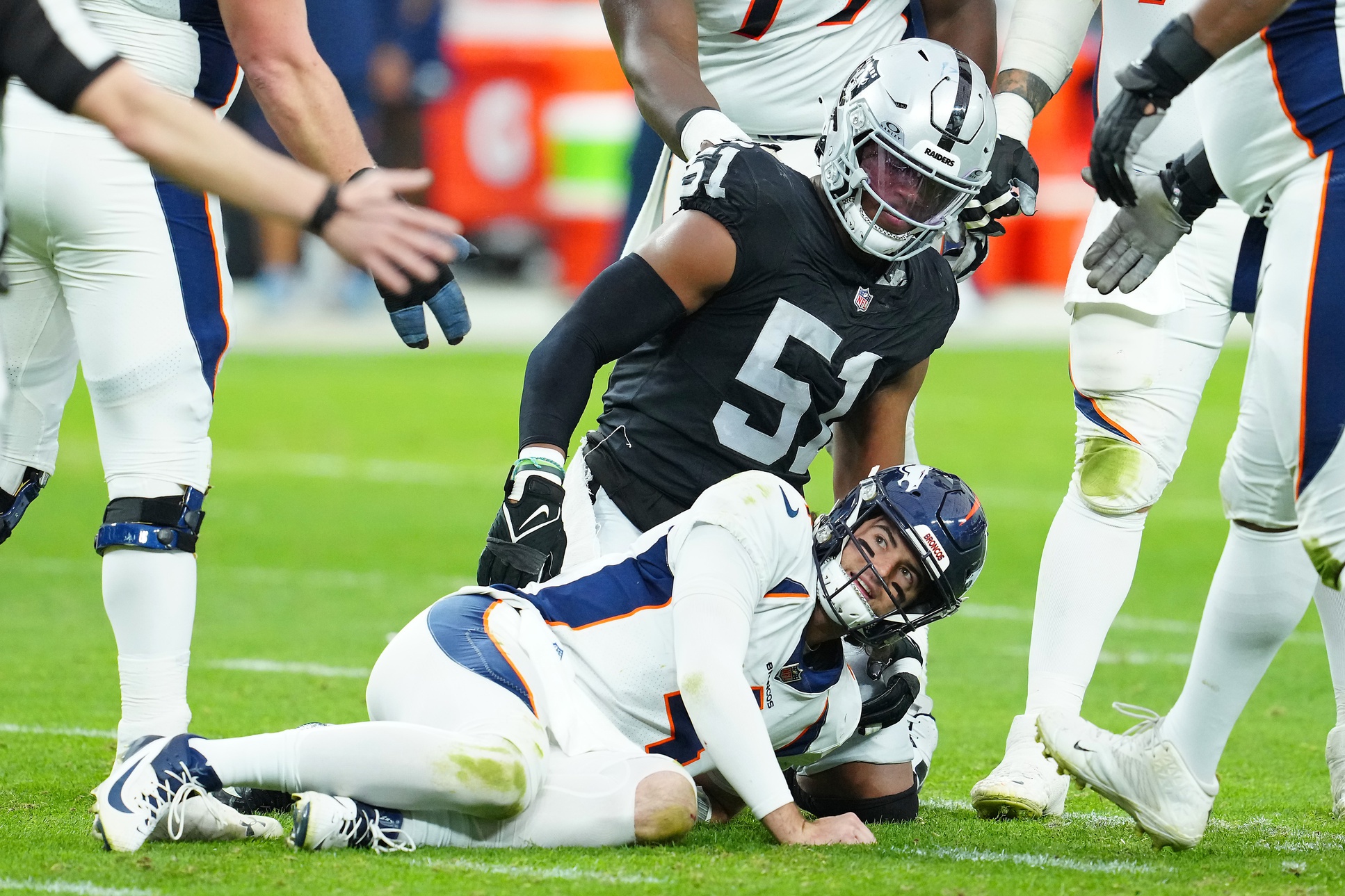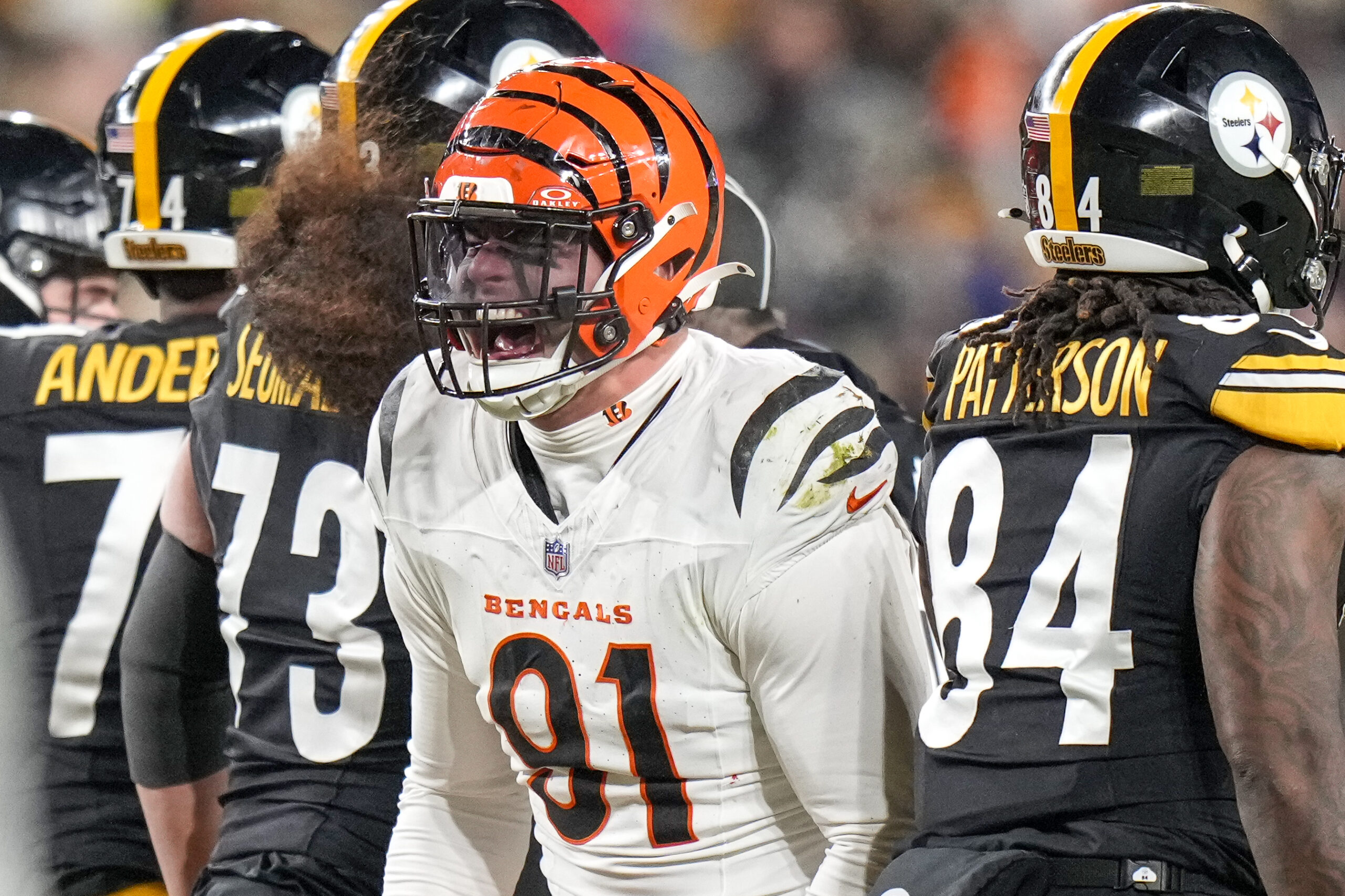NFL Analysis
9/9/24
20 min read
1st & 10: Week 1 - Stroud vs. Richardson, Lions-Rams, and More

Welcome to the Week 1 edition of 1st and 10. For those new to this column, we will run down 10 topics each week as a recap of Sunday’s action. We’ll dive deep into the biggest games, stats, and plays.
There was a lot of fun football this week, so let’s get to it.
All stats provided by TruMedia unless noted otherwise.
1st & 10 NFL Week 1
1. C.J. Stroud vs. Anthony Richardson Delivered
Texans-Colts matchups might already be in must-watch territory.
In the first game between these two last season, Anthony Richardson had two rushing touchdowns before he was knocked out of the game with a concussion. The second meeting in the season finale was a de facto AFC South title game that came down to a fourth-and-1 stop at the 15-yard line.
Houston’s 29-27 win was right in line and delivered everything we could have hoped for in this matchup between two young and exciting quarterbacks.
The Texans offense picked up where it left off and then some. C.J. Stroud averaged 0.24 EPA per play, the sixth-highest of the week, as he managed a tough day in the pocket against a fast, aggressive Indianapolis pass rush. Stroud was hit nine times and took four sacks.
That duress forced Stroud into some rare misfires and bad decisions, but he kept the offense from coming off the rails. In the second quarter, Stroud unleashed a deep pass off play-action that went for a 55-yard gain to Nico Collins.
That set up a nine-yard Stefon Diggs touchdown, which showed how dangerous the Texans can be in the passing game. Houston came out in a 3x1 set, with the three wide receivers on the trips side and Diggs as the outside receiver. Joe Mixon was the back to the opposite side.
Before the snap, Mixon went in the Christian McCaffrey shuffle motion, which just slightly pulled the linebacker to that side of the field closer to the numbers.
At the snap, Diggs ran under a shallow corner route from Tank Dell as the No. 2 and seam from Collins as the inside receiver. Zaire Franklin (44) had to respect Collins and carried him into the end zone, while Diggs had a clear path underneath.
The go-ahead touchdown was on a fourth-and-goal from the 2-yard line. Houston moved the pocket and Stroud hit Diggs on a quick out.
STROUD TO DIGGS TD ON 4TH AND GOAL.
— NFL (@NFL) September 8, 2024
📺: #HOUvsIND on CBS/Paramount+
📱: https://t.co/waVpO909ge pic.twitter.com/4YB37ERzzY
As much as the passing game worked, the most exciting aspect of the Texans’ offense was the success of the running game. This was one of the league's worst rushing offenses last season — 27th in EPA per play — and it ruined their playoff game against Baltimore.
Houston’s 52.8 percent rushing success rate in this game was the fourth-highest of the week. Last year, the Texans were a heavy 21-personnel team with FB Andrew Beck. They used 21 personnel 21.9 percent of the time, which was the fourth-highest in the league. However, the Texans released Beck this offseason.
Instead of using the fullback, Houston leaned into different 12-personnel looks. After using 12 personnel on 9.7 percent of plays in 2023, the Texans used it 38.2 percent of the time in Week 1. When Houston wanted those fullback looks, Dalton Schultz went into the backfield, which happened on 8.7 percent of his snaps.
Indianapolis matched Houston's 12 personnel in base 41.4 percent of the time and in nickel 58.6 percent. When the Texans ran from 12 against nickel, they had 11 carries for 82 yards with a 63.6 percent success rate.
If the Texans can successfully use their ground game and weaponize their personnel packages, this offense could be ready to take off.
Meanwhile, the Indianapolis offense was more explosive, though the down-to-down consistency was not there.
Richardson only completed 47.4 percent of his passes, but he still averaged 0.21 EPA per play and had an 87.6 QBR (think of QBR like a win probability metric — a team with a quarterback who played like Richardson would be expected to win 87.6 percent of the time).
Part of the reason is because Richardson’s big plays were so valuable. He had two passes over 50 yards in this game — both traveled more than 50 yards in the air.
Per Next Gen Stats, his touchdown pass to Alec Pierce traveled 65.3 yards in the air, the third-longest completion in the Next Gen Stats era.
The throw came after he lost his footing.
He had another deep pass to Pierce in the fourth quarter.
Last year, no quarterback had more than one completion of 50 or more air yards all season. Richardson had two in this game. Five quarterbacks in 2022 had two all season.
Those types of throws give the Colts more margin for error when trying to find down-to-down consistency. The offense can live with some inaccurate sprays when those big plays are available.
Now, the Colts would love it if Richarson completed more than half his passes, and living on 50-yard bombs is not sustainable, but the explosive play-to-success rate ratio can be worked through while consistency develops.

2. Josh Allen, Bills Played It Safe (complimentary)
No quarterback had a higher success rate yesterday than Josh Allen (61.8 percent). That’s a welcome stat for an offense in its first full season under offensive coordinator Joe Brady and after the receiver room was reworked in the offseason.
An early 17-3 deficit put them in a hole and forced the offense to be great to mount a comeback — and it was.
Allen went into hero mode without needing to go crazy. He finished with 10.1 yards per attempt and 0.32 EPA per play, but as the success rate hinted, he wasn’t hunting for big plays down the field and putting the ball into danger. Allen only had two throws that traveled more than 20 air yards. This is just his 15th career game with fewer than three deep shots.

The offense was much more controlled, and Allen clearly made an effort to get the ball out quickly and play on time. Allen had 60.9 percent of his dropbacks finish within 2.5 seconds of the snap, the seventh-highest rate of his career. It was also his most successful game among the games of 60 percent or more.

His average time to throw is higher because Allen scrambled more than he did in those other games, but that is a best-of-both-worlds scenario because Allen was effective with his legs and did not mess with the rhythm of the offense.
When Allen did run, it mattered. He had a 100 percent success rate as a runner, which included two touchdowns.
But it was that passing game that looked like something to build on. The Bills were creative in how they created space and got the ball out.
On this second down early in the second quarter, Buffalo motioned Mack Hollins, the best-blocking receiver on the team, from the left to the right side. At the snap, the Bills pulled the center and faked a pitch to James Cook. That froze LB Kyzir White and allowed Dawson Knox to spring free to the middle of the field.
— Dan Pizzuta (@DanPizzuta) September 9, 2024
Buffalo was another team that switched up personnel looks. The Bills started with 11 personnel early and then went to more 12 personnel in the second half. In the end, the Bills were about even in efficiency from both packages, averaging 0.41 EPA per play from 11 and 0.34 from 12.
Everything the Bills could have wanted to showcase in the offense was there. Khalil Shakir took a screen for a touchdown, Keon Coleman had a deep, contested reception that set up a score, and the running game gelled enough to keep everything moving.
In a game where the defense struggled to consistently stop Arizona, this could have been a weird letdown game. That’s especially true against a defense that wants to look chaotic and throw things against the wall — the Cardinals blitzed Allen on 36.7 percent of his dropbacks.
But the Bills and Allen were controlled. Buffalo hasn’t always won that way, and it should be a positive sign to see that they can.

3. Takeaways from Lions-Rams
the type of game Detroit is built for
Dan Campbell and Brad Holmes have built this tough, physical football team that can do all the clichè things, like impose its will and outlast its opponents. But that’s exactly what happened late in the 26-20 overtime win.
The Los Angeles Rams defense had been frisky and pressured Jared Goff on 35.5 percent of his dropbacks while relying on a young defensive line. Linebackers were holding up and flying to the ball despite those linebackers being Troy Reeder and Christian Rozeboom.
But by the time the Detroit Lions got the ball to start the overtime drive, the Rams were gassed. That’s where the Lions threw down. Detroit went 70 yards in eight plays and 4:40. Three runs to start the drive took the Lions from their own 30-yard line to the Rams’ 28. David Montgomery won it with a one-yard touchdown run.
Montgomery led all rushers in Week 1 with 7.1 EPA, and his 64.7 percent success rate led all backs with at least 10 carries. The Lions’ offensive line was a big driver of that success.
Montgomery averaged 2.06 yards before contract per rush and was only contracted within a yard of the line on 29.4 percent of his carries. Only Alvin Kamara (26.7 percent) had a lower rate in Week 1.
Williams is Offense's Most Important Player
As effective as Detroit’s offense has been during the Ben Johnson-Goff era, there has not been a legitimate vertical threat. Josh Reynolds was that guy in theory, but while he could stretch the field vertically, his speed wasn’t scaring defenses.
Having that threat gives the Lions the chance to create big plays down the field. Plus, the defensive resources needed to defend against that can open up the middle of the field, which is where Goff loves to attack anyway.
Previously, teams could sit on those middle-of-the-field throws and at least limit what could be done.
For the Lions to take the offense to another level, Jameson Williams needs to be that guy. In Week 1, he was. Williams had five catches for 121 yards and a touchdown. On a third-and-3 in the third quarter, Williams blew through and past Tre’Davius White on the outside.
WAYYYYYYYYYYYYYYYYMO#LARvsDET | 📺 NBC pic.twitter.com/GtCJg72dWU
— Detroit Lions (@Lions) September 9, 2024
Williams started to come on late last season, but even that was in more gadget roles. If he lives up to the type of prospect he was at Alabama and wins with speed as an outside receiver, defenses will have to pick their poison about what they try to stop. With how many ways Detroit could win, there are only wrong answers.
All It Takes Is McVay, Stafford to Have a Good Offense
The Rams hung on in this game, and Sean McVay and Matthew Stafford did all they could to prove that. Throughout the game, the Rams lost Puka Nacua and multiple offensive linemen.
Stafford played behind three different offensive line combinations. The starting offensive line had Jonah Jackson at center and Joe Noteboom at left tackle. Noteboom got hurt, which brought in A.J. Acuri, a 2022 seventh-round pick.
The combination of the starting four plus Acuri lasted just seven dropbacks. Steve Avila left the game, which forced Jackson to move to guard, and Beaux Limmer, a rookie sixth-round pick, came in to play center.
Behind that combination, with just the right side playing where they started the game, Stafford averaged 0.37 EPA per play with a 50 percent success rate. The offensive is a long-term concern, but Stafford made ridiculous throws, and McVay had enough well-designed plays to get receivers open.
Even with Nacua out, Cooper Kupp looked healthy. He had 21 targets for 14 receptions and 110 yards and was the most active motion man in seven years.

4. Baker’s Big Day
One of the biggest questions surrounding the Buccaneers was how the play of Baker Mayfield would look following the loss of Dave Canales. The opening game was a pretty good sign.
Mayfield went 24-of-30 for 289 yards and four touchdowns in a 37-20 win against Washington. His 0.51 EPA per play was the second-highest of the week and the 10th-best in his career, the highest in a game since his last-minute 2022 start with the Rams (0.69).
What made Mayfield’s 2023 season promising under Canales was his play and confidence in the pocket. Mayfield had been a jittery pocket passer, often fleeing under pressure or leaving the pocket before necessary. Canales settled him down, and Mayfield looked more comfortable managing the pocket.
That continued in the opening Week of 2024, even while the Commanders blitzed Mayfield on 44.1 percent of his dropbacks. Against the blitz, Mayfield went 11-of-14 for 155 and two touchdowns, 0.92 EPA per play.
On a third-and-6 early in the first quarter, Mayfield stood in the pocket against a five-man rush and delivered a strike to Mike Evans while he took a big hit.
Baker taking a hit pic.twitter.com/W4h4kaduu7
— Dan Pizzuta (@DanPizzuta) September 9, 2024
The Buccaneers also had plays to handle the blitz and get the ball down the field.
On a third-and-7 to start the fourth quarter, Tampa Bay motioned Jalen McMillan inside Chris Godwin and caused a coverage bust on McMillian’s deep route. Mayfield had clear space in the pocket against the five-man rush and threw an easy 32-yard touchdown.
Baker-McMillan TD dots pic.twitter.com/XwNdGmlBO1
— Dan Pizzuta (@DanPizzuta) September 9, 2024
The Buccaneers spread the ball around and had success just about everywhere. Godwin led the team with targets and was often the short-area receiver off those pressure looks. Evans thrived downfield and had two touchdowns.
Tampa Bay will have a tougher test on the road against the Lions next week, but coming out of the gate hot is a fun development for this quarterback and offense.

5. Cowboys Defense Flys
The Dallas Cowboys started the day making life nice for their starting quarterback, giving Dak Prescott a five-year extension worth $240 million with $231 million guaranteed.
It makes Prescott the NFL's highest-paid player, and Prescott probably left money on the table, given how much he could have gotten as a free agent. This contract was more of a commitment from Prescott to the Cowboys than the other way around.
Ironically, the Cowboys ended their day by making life hell for opposing QB Deshaun Watson. In a 33-17 win, Dallas held Watson to a 9.4 QBR, -0.41 EPA per play, and a league-worst 23.2 percent success rate.
Watson looked lost and uncomfortable from that start, which allowed the Cowboys to rev up the pass rush. Under defensive coordinator Mike Zimmer, the Cowboys played almost exclusively nickel (88.2 percent) and gave the Browns light boxes on 70 percent of snaps. He didn’t even send the blitz that often (21.4 percent) because he didn’t have to.
Micah Parsons led all defenders in pressures with 11 for a 22.9 percent pressure rate. He had five quarterback hits and also had a deflected pass that turned into an interception for LB Eric Kendricks. Per Next Gen Stats, Parsons had a pass rush get off of 0.69 seconds, the fourth-fastest for an edge rusher on Sunday.
The Cowboys had 17 quarterback hits. Only one team last season had a game with 15 quarterback hits, the Lions in Week 18 against the Minnesota Vikings. This was the most quarterback hits by a team since the Pittsburgh Steelers had 18 against the Denver Broncos in Week 2 of the 2020 season. Drew Lock was knocked out of that game early, and Jeff Driskel played most of it as the backup.
Because of the pressure, Watson was wildly throwing passes into tight coverage. Dallas had eight passes defended and could have had more than two interceptions.
Watson will be a problem for the Browns this season, but this Cowboys pass rush might be a problem for every other quarterback, too.

6. Is It Already Time To Panic About The Panthers?
If the Carolina Panthers had hoped that a coaching change would magically change the direction of the franchise, Week 1 was not the result they were looking for. Carolina lost 47-10 to New Orleans, and that score might make it look closer than it was, as the Saints dominated on both sides of the ball.
Derek Carr was confident and comfortable, ending the day with a league-high 0.58 EPA per play. It was clearly his best game as a Saint, and he only had one game above 0.30 last season. There was little pressure on him. Even as the Panthers blitzed 40 percent of the time, Carr was only pressured on 12.5 percent of his dropbacks.
Offensively, the Panthers continued to look hopeless. Carolina tried to take shots with Bryce Young, but his 12.6-yard aDOT resulted in just 5.4 yards per attempt and a 10.7 QBR. Young was sacked four times and threw two interceptions. One came on the first offensive snap.
FIRST PLAY ON DEFENSE & IT'S A WILL HARRIS INTERCEPTION
— New Orleans Saints (@Saints) September 8, 2024
📺 FOX pic.twitter.com/CWnDwA3bu3
Young’s -0.45 EPA per play was the fifth-worst of his career. Knowing he has four worse games after one season can’t be much help.
The signs of things that could help Young weren’t there. Adam Thielen still led the receivers in routes run. There was a lot of Jonathan Mingo. The offense never settled, partly due to the quarterback.
It’s not a great start for a team hoping things would look different in 2024, but it looked a lot like 2023 on Sunday.

7. Rookie Quarterbacks Check-In
It was a rough day for the three rookie quarterbacks who started.
After flashing some of the out-of-structure big plays that made him such an exciting prospect during the preseason, first-overall pick Caleb Williams looked like he was catching up to NFL speed in his debut.
Williams had 72.4 percent of his dropbacks come within 2.5 seconds of the snap. But even with that quick game, he sprayed passes and rarely looked comfortable. When he did try to create, it didn’t go well, either.
On dropbacks of three or more seconds, Williams was 1-for-6 for 11 yards with a 15.2 aDOT and -0.74 EPA per play. Overall, he finished with -0.47 EPA per play, the third-lowest of the week.
Still, the Bears won 24-17 thanks to an aggressive defense that forced three turnovers, including a pick-6 and a blocked punt returned for a touchdown. That’s part of the optimism around Chicago that this team can be good on both sides of the ball, and it gave the rookie a win he wouldn’t have gotten otherwise.
By straight stats, Jayden Daniels had the best game of the bunch but most of his success in the loss to the Buccaneers came from scrambling. He completed 70.8 percent of his passes but had a 1.8-yard average depth of completion, and 87.5 percent of his passes were within 10 yards of the line of scrimmage.
A lot of that has to do with the horizontal offense Kliff Kingbury likes to run, and part was facing a Todd Bowles defense that blitzed 42.4 percent of the time.
Daniels had four runs of 10 or more yards and put up 0.31 EPA per play thanks to two rushing touchdowns, though both came late in the game with Washington trailing. He scrambled on 21.2 percent of his dropbacks but also had eight designed runs. The scrambles should come down, but running should continue to be an effective part of his game, combined with a passing attack that could look more normal against another defense in his next start.
Bo Nix had the roughest outing of the three. Nix never looked settled, rushed his process, and forced throws. Nix had 3.3 yards per attempt on 42 passes. That YPA mark is tied for the sixth-lowest in a game with at least 40 pass attempts since 2000.
Without any downfield threat, the Seahawks sat and drove on shorter routes. That could have led to more interceptions than the two Nix threw. The Seahawks ended up with six passes defended, and Nix threw into tight coverage on 19 percent of his throws, marks both lower than one would expect from watching the game.
>> READ MORE: Grading Rookie QB Performances
8. Chart of the Day

It was cool to see J.K. Dobbins back after he tore his Achilles in Week 1 last season.
The explosion was there for him, as Dobbins ran for 135 yards on just 10 carries. He ran for 10 or more yards on three of those carries and was only stopped behind the line once.
9. Play of the Day
Andrew Van Ginkel’s pick-6 looked similar to the pick-6 he had last season with the Miami Dolphins. Per Next Gen Stats, it was the fastest interception (1.16 seconds) since his last one (1.26).
It was a sign of how he fits into this Minnesota defense under Brian Flores and how that defense frustrated the Giants. Van Ginkel had four pressures, two hits, and the pick.
The Vikings only blitzed 24.5 percent of the time — which would have been the second-lowest rate in a game for the 2023 team — but created pressure on 40.8 percent of Daniel Jones’ dropbacks.
10. The Kickoff Was Dynamic
In our first extended look at the Dynamic Kickoff, the results were fun.
So far in Week 1, 34 percent of kicks have been returned. That’s a significant increase from the touchback fest we saw in the first two games of the season on Thursday and Friday.
We saw some big returns, including the first touchdown by DeeJay Dallas of the Arizona Cardinals.
While it was fun to see everything work, we’ll be watching it weekly to see how long it lasts. Teams could instantly decide that taking a touchback at the 30-yard line is the safer option.
The average starting field position after a return is the 29.3-yard line. On all kickoffs, including touchbacks, it’s 29.8. On returns. 44.4 percent reached the 30-yard line, and just 11.1 percent were stopped inside the 20.
We’ve seen the change in kickoff is absolutely helpful when kicks are returned. But there is the fear the NFL did not go far enough with the changes to have the desired effect for the entire season. In the XFL, the touchback was at the 35-yard line, and the kicker kicked from his own 30-yard line instead of the 35.
Both of those rules encouraged more returns by making touchbacks harder to kick and giving a bigger buffer between the average starting field position on returns and the touchback point.
As viewers, we should hope teams keep returning kicks at this rate. If not, there are simple fixes to make returns more likely, and we should hope those are changes made.







